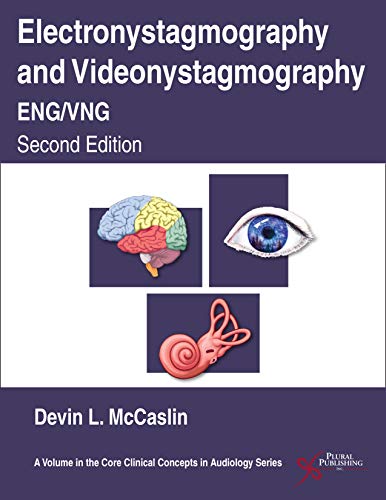
Electronystagmography and Videonystagmography (ENG/VNG), Second Edition (Original PDF from Publisher)
$4.40
Format: Publisher PDF
Category: Neurology Psychiatrics
published date: 08 Mar 20

$4.40
Format: Publisher PDF
Category: Neurology Psychiatrics
published date: 08 Mar 20
Electronystagmography and Videonystagmography (ENG/VNG), Second Edition remains a practical and portable resource for conducting and interpreting the electronystamography/ videonystagmography examination.
In order to provide a foundation for understanding ENG/VNG test results, the early sections of the text are dedicated to a description of normal and impaired peripheral and central vestibular system function. Also addressed is the process of central nervous system compensation. These sections are followed by a description and interpretation of the ENG/VNG subtests including: an expanded ocular motor testing section, positional/ing testing, and caloric testing. The text now also includes a chapter describing the most common disorders causing dizziness and provides the diagnostic criterion for each. Finally, examples of counseling materials and illustrative case studies that serve to highlight the principles and techniques covered in the manual are provided.
Graduate students and practicing clinicians will benefit from this unitary source for protocols and procedures required for completing an ENG/VNG examination.
New to the Second Edition:
From the Foreword
"Now we have before us the second edition of Dr. McCaslin s book, and it s even better than the first. Same firsthand clinical experience, same serious scholarship, same lucid writing, but now there s updated and expanded information on eye movement neurophysiology and a new set of illustrations. Also new is a whole chapter listing common (and some not so common) dizziness-causing disorders. Dr. McCaslin has outdone himself here. For each disorder, he provides historical background, pathophysiology, clinical presentation, laboratory findings, and treatment. He also provides several useful appendices a dizziness questionnaire, suggested alerting tasks to be used during caloric testing, and a table listing reliability and localizing value of various ENG/VNG findings.
Who is this book for? It should be required reading for all clinicians who perform ENG/VNG and for all students who aspire to do so. It should also be read by referring physicians. ENG/VNG test results alone rarely yield a diagnosis, but they often provide useful information to physicians who understand their implications and relate them to other medical data available for diagnosis. One need not look elsewhere to find cogent descriptions of ENG/VNG results and their implications. They re in this book. I learned a lot. You will, too."
Charles W. Stockwell, PhD